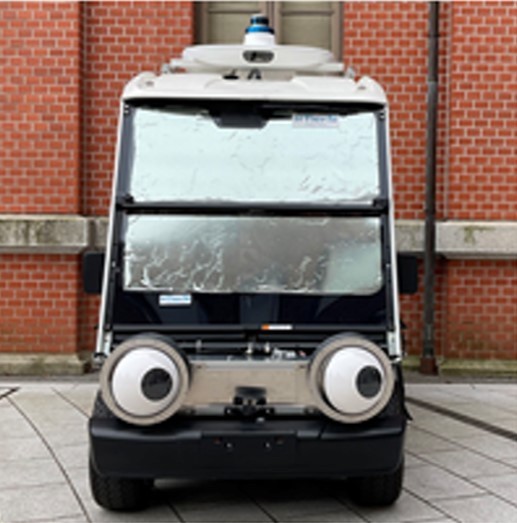Researchers from the University of Tokyo have experimented with attaching a pair of eyes to the front part of a car. It turns out that this simple adjustment could pave the way for pedestrians to make smart decisions when crossing the streets and roads.
Gazing Car Can Improve Pedestrian Safety

Self-driving vehicles operate on full autopilot when the car owner activates the feature. However, it's not safe to say that it could avoid all accidents that could happen on the roads.
Regardless if the car is self-operated or not, pedestrians should always be mindful of their surroundings when crossing the street.
Recently, a group of researchers tested putting two eyes on the front part of a self-driving vehicle. According to a report by Science Alert, they discovered that a gazing car can potentially avoid traffic accidents.
Implementing this to modern cars is useful since the pedestrians could quickly recognize the incoming vehicle so they would feel much safer when making street-crossing remarks.
The researchers made use of a pair of "cartoonish" eyes that we usually see in children's movies. It's interesting to note that they gain control of these peepers. In the future, they envision that artificial intelligence (AI) will be able to fully control them.
Related Article: Driverless Cars: Save Passengers Or Save Pedestrians? The Dilemma Of How Moral Should We Make Our Robots
VR Experiment Involving a Car's Robotic Eyes
For the experiment, the researchers include 18 participants in a virtual reality space. The participants are nine women and nine men.
Additionally, the researchers involved four scenarios in the study. The first two situations include a moving car with the presence of eyes while the last two scenarios involve a vehicle with no eyes.
They want to know if people would hesitate to cross the street for their safety or refrain from crossing the other lane. The research concludes that the gazing car ensures smoother and safer crossing for pedestrians.
There's a difference between men's and women's perceptions when seeing moving eyes in front of a car. The former said that they served as a warning to pause during dangerous cases. The latter emphasized that the robotic eyes gave them a go signal to cross the street safely.
"While other factors like age and background might have also influenced the participants' reactions, we believe this is an important point, as it shows that different road users may have different behaviors and needs, that require different communication ways in our future self-driving world," Chia-Ming Chang, one of the authors from the University of Tokyo, said.
Indeed, the researchers saw a significant interaction between autonomous cars and pedestrians. It's a good indication that self-driving cars can be as safe as other vehicles.
To view the study entitled "Can Eyes on a Car Reduce Traffic Accidents?" visit ACM DL Digital Library for more information.
If you want to understand the gist of the research in simpler terms, take a look at the video below.
Read Also: Tesla Full Self Driving Beta Welcomes EV Owners with 95 Safety Score
This article is owned by Tech Times
Written by Joseph Henry
ⓒ 2025 TECHTIMES.com All rights reserved. Do not reproduce without permission.




